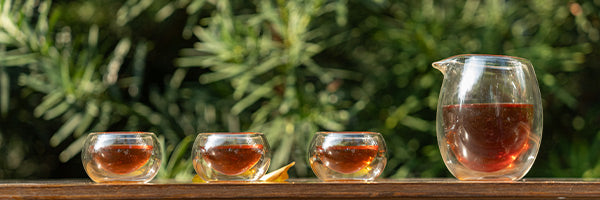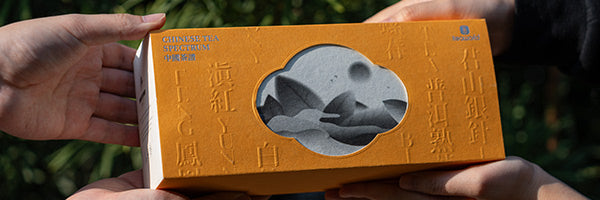I. Введение
Листовой зеленый чай, полученный из растения Camellia sinensis, приобрел широкую популярность благодаря своим многочисленным преимуществам для здоровья. Наполненный антиоксидантами, листовой чай связывают с улучшением работы мозга, контролем веса и снижением риска хронических заболеваний, таких как болезни сердца и рак.
На идеальное время для употребления листового зеленого чая влияют несколько факторов. К этим факторам относятся содержание кофеина в различных сортах листового зеленого чая, его влияние на пищеварение и его тонизирующие свойства. Понимая эти факторы, люди могут оптимизировать преимущества потребления листового зеленого чая. Откройте для себя бодрящий вкус нашего ассортимента зеленого чая на iTeaworld.
II. Содержание кофеина и сон
Одним из важнейших факторов, которые следует учитывать при определении лучшего времени для употребления листового зеленого чая, является содержание в нем кофеина. Хотя листовой зеленый чай обычно содержит меньше кофеина, чем кофе, точное количество может варьироваться в зависимости от конкретного сорта и метода заваривания.
Важно быть осторожным, употребляя листовой зеленый чай перед сном, так как содержащийся в нем кофеин может мешать сну. Кофеин действует как стимулятор, повышая бдительность и препятствуя наступлению сна. Чтобы способствовать крепкому сну, рекомендуется избегать употребления листового зеленого чая вечером или незадолго до сна.

Чтобы дать организму достаточно времени для усвоения кофеина, рекомендуется прекратить прием листового зеленого чая за несколько часов до сна. Этот временной интервал варьируется от человека к человеку, но общая рекомендация заключается в том, чтобы воздержаться от употребления листового зеленого чая по крайней мере за четыре-шесть часов до того, как вы планируете лечь спать. Это дает организму достаточно времени для переработки и выведения кофеина, что снижает риск нарушений сна.
Помня о содержании кофеина и времени употребления листового зеленого чая, люди могут наслаждаться его полезными свойствами, не жертвуя качеством сна.
III. Пищеварение и питание
Другим фактором, который следует учитывать при определении лучшего времени для употребления листового зеленого чая, является его влияние на пищеварение и усвоение питательных веществ. Употребление листового зеленого чая между приемами пищи может фактически улучшить усвоение питательных веществ из продуктов, которые мы едим. Было показано, что катехины, присутствующие в листовом зеленом чае, оказывают положительное влияние на усвоение питательных веществ, таких как железо и кальций. Выпивая пищеварительный чай между приемами пищи, особенно натощак, вы можете максимизировать биодоступность этих важных питательных веществ.
Однако перед тем, как пить листовой зеленый чай после еды, дайте немного времени для пищеварения. Ожидание в течение 30–60 минут после еды позволяет начаться процессу пищеварения и обеспечивает полное усвоение питательных веществ. При употреблении сразу после еды листовой зеленый чай может помешать усвоению некоторых минералов, таких как железо. Это особенно важно для людей, которые испытывают дефицит железа или полагаются на богатые железом продукты для удовлетворения своих потребностей в питании.
Людям, которые употребляют пищу, богатую железом, следует проявлять осторожность при употреблении листового зеленого чая. Танины, содержащиеся в листовом зеленом чае, могут связываться с железом и препятствовать его усвоению. Поэтому рекомендуется пить листовой зеленый чай отдельно от еды или выбирать альтернативное время, когда потребление богатой железом пищи минимально. Это помогает гарантировать, что организм может эффективно усвоить железо из рациона.

IV. Энергетические эффекты
Листовой зеленый чай может служить отличным тонизирующим средством по утрам или в середине дня, когда вам нужен естественный заряд энергии. Сочетание кофеина и L-теанина, аминокислоты, содержащейся в листовом зеленом чае, создает синергетический эффект. В то время как кофеин обеспечивает мягкий заряд энергии, L-теанин способствует расслаблению и спокойной концентрации, предотвращая нервное чувство, часто связанное с потреблением кофеина.
Однако важно избегать употребления листового зеленого чая в конце дня, когда вы пытаетесь заснуть. Стимулирующее действие кофеина может повлиять на вашу способность заснуть и может нарушить качество вашего сна. Обычно рекомендуется ограничить или избегать употребления листового зеленого чая по крайней мере за четыре-шесть часов до сна, чтобы обеспечить спокойный ночной сон.
Выбирая стратегически правильное время употребления листового зеленого чая, вы сможете воспользоваться его тонизирующими свойствами, не нарушая режим сна.
V. Упражнения и активность
Когда дело доходит до упражнений и физической активности, листовой зеленый чай может служить в качестве гидратирующего напитка, который обеспечивает дополнительные преимущества. Листовой зеленый чай содержит воду, которая помогает поддерживать гидратацию во время тренировок. Поддержание надлежащего уровня гидратации необходимо для оптимальной производительности и общего здоровья.
Однако важно избегать употребления очень горячего или очень холодного листового зеленого чая во время интенсивной физической активности. Употребление очень горячего листового зеленого чая может повысить температуру тела и потенциально привести к дискомфорту или перегреву. С другой стороны, употребление очень холодного листового зеленого чая может вызвать сужение кровеносных сосудов и помешать надлежащей гидратации.

Кроме того, важно проявлять осторожность, чтобы не допустить чрезмерной гидратации. Хотя листовой зеленый чай может способствовать общему потреблению жидкости, важно прислушиваться к сигналам жажды вашего тела и избегать чрезмерного потребления жидкости во время упражнений. Чрезмерная гидратация может привести к гипонатриемии — состоянию, характеризующемуся низким уровнем натрия в крови, что может быть опасно.
Также стоит отметить, что некоторые лекарства могут взаимодействовать с компонентами листового зеленого чая. Если вы принимаете какие-либо лекарства, особенно те, которые метаболизируются печенью или влияют на свертываемость крови, рекомендуется проконсультироваться с лечащим врачом, чтобы убедиться, что употребление листового зеленого чая не влияет на их эффективность и не представляет никаких рисков.
При включении листового зеленого чая в свою программу тренировок выбор лучшего листового чая может улучшить ваши общие ощущения. Превосходное качество и свежесть листового чая могут обеспечить более крепкий вкус и аромат по сравнению с пакетированным чаем. Кроме того, листовой чай позволяет лучше контролировать процесс заваривания, что позволяет вам настраивать крепость листового зеленого чая в соответствии с вашими предпочтениями.
VI. Температура заваривания листового зеленого чая
Крайне важно заваривать листовой зеленый чай при правильной температуре, чтобы извлечь его вкусы, антиоксиданты и другие полезные ингредиенты. В зависимости от типа листового зеленого чая рекомендуемая температура заваривания может варьироваться. Ниже приведены некоторые общие рекомендации:

Зеленый листовой чай из Японии: зеленые чаи Сенча и Гёкуро из Японии часто заваривают при более низких температурах, около 160-175°F (70-80°C). Эта более низкая температура помогает сохранить нежные вкусы, одновременно уменьшая горечь.
Китайские листовые зеленые чаи, такие как Лунцзин или Колодец Дракона, часто завариваются при несколько более высоких температурах, от 175 до 185°F (80-85°C). Это позволяет более полно раскрыть вкус, сохраняя при этом приятный вкус.
Смеси листового зеленого чая: смеси листового зеленого чая, в состав которых входят другие ингредиенты, такие как травы или цветы, могут потребовать другой температуры заваривания. Лучше всего обратиться к инструкции по завариванию, предоставленной производителем, для определения оптимальной температуры.
Заваривая листовой зеленый чай с более прохладной водой, вы можете увеличить доступность антиоксидантов, катехинов и других полезных ингредиентов. Более горячая вода иногда может привести к извлечению большего количества танинов, что приводит к резкому вкусу.
При выборе оптимальной температуры также важно учитывать процесс заваривания. Если вы используете чайник или гайвань, например, вам следует нагреть емкость горячей водой перед добавлением листьев зеленого чая и воды. Это помогает поддерживать постоянную температуру заваривания во время фазы настаивания.
Обращая внимание на температуру и технику заваривания, вы можете гарантировать, что будут извлечены лучшие вкусовые качества и что потенциальная польза для здоровья листового зеленого чая будет максимальной.

В iTeaworld вы можете ощутить освежающий вкус нашего ассортимента листового зеленого чая. Откройте для себя мир премиальных листовых зеленых чаев, тщательно отобранных за их освежающие и яркие вкусы. От традиционного Лунцзин до изысканного Билуочунь, каждый чай в нашем ассортименте обеспечивает особый и приятный опыт чаепития. Мы страстно хотим поделиться духом китайской чайной культуры с такими поклонниками чая, как вы в iTeaworld. Посетите iteaworld.com, чтобы просмотреть наш обширный ассортимент высококачественных листовых чаев. Откройте для себя естественную пользу и прекрасные вкусы нашего ассортимента листового зеленого чая и отправьтесь в исследовательское путешествие по чаю с iTeaworld.












































































